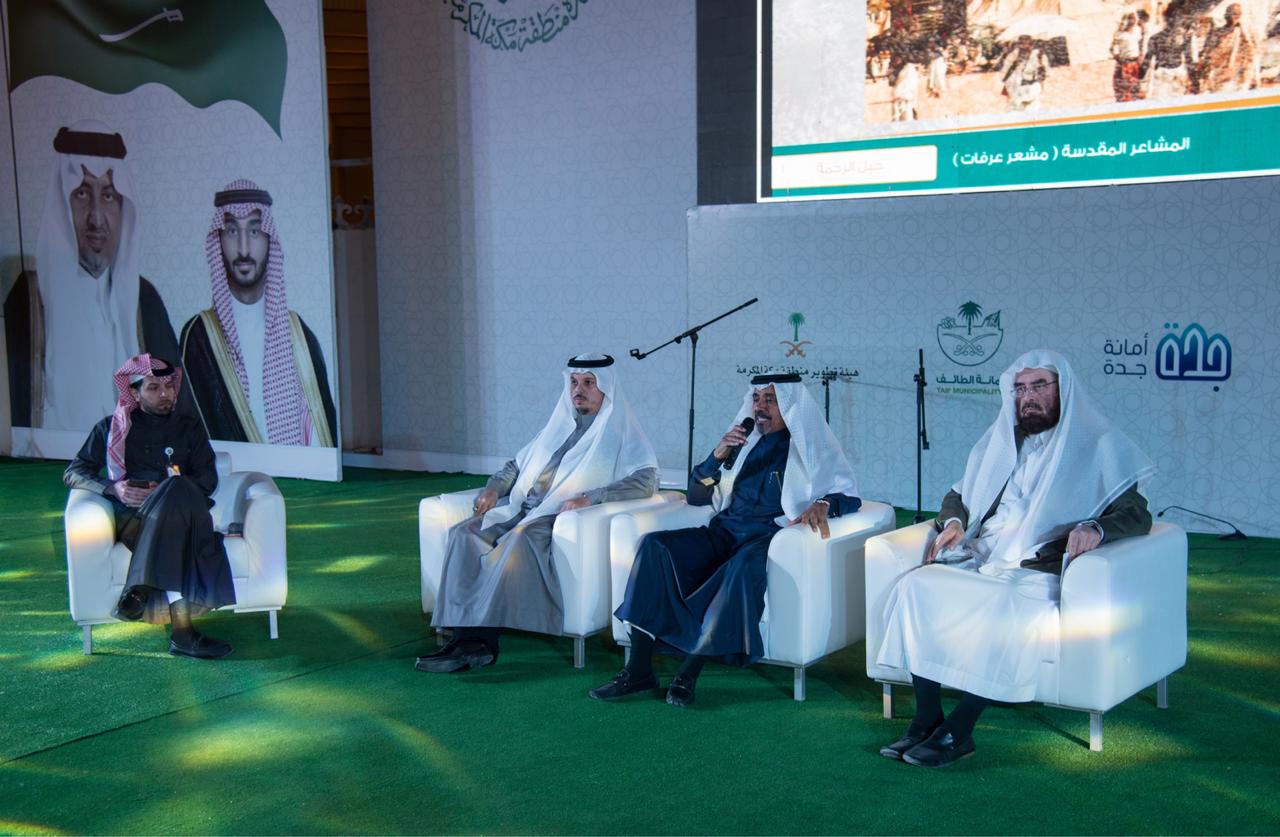
King Salman bin Abdulaziz Chair for Studies on the History of Makkah Al-Mukarramah at Umm Al-Qura University showed the historical, cultural and civilizational heritage of Makkah and the two governorates of Al-Leith and Al-Qunfudhah during the seminar organized in collaboration with the Emirate of Makkah Province in the National Festival for Heritage and Culture, 'Al-Janadriyah 33'.
The seminar was held at the theater of the pavilion of the Emirate of Makkah Province in Al-Janadriyah 33. The Professor of King Salman bin Abdulaziz Chair for Studies on the History of Makkah Al-Mukarramah, Dr. Abdullah Al-Sharif, pointed out that Makkah Al-Mukarramah has flourished in the Saudi era with regard to the expansions and facilities projects of the Sacred Mosque and the holy sites. He also explained that what the leaders of the Kingdom have done enabled them to provide the best services to pilgrims, especially in terms of security and safety. According to Dr. Al-Sharif, Makkah is rich in ancient monuments, such as the geographical places related to the biography of the Prophet (peace be upon him), historical mosques such as Al-Bay`ah Mosque and Al-Jinn Mosque, and the wells of Zamzam, Tuwa and Al-Hudaybiyah.
One of the historical monuments that Dr. Al-Sharif talked about is Al-Saqqaf palace, which was a headquarter of the state and governance during the era of King Abdulaziz and King Saud. This palace represents a unique example of traditional architecture in Makkah Al-Mukarramah.
On his part, the Vice-Dean of the College of Shari`ah and Islamic Studies for Training and Community Service, Dr. Ibrahim Al-Salmi, tackled the deep historical roots of Al-Qunfudhah governorate, since the time it was known as Hali Ya`qub. He added that this city never witnessed stability except under the Saudi reign. He cited as evidence a document issued by the founder of the Saudi State, His Majesty King Abdulaziz bin Abdur-Rahman, may Allah bestow His Mercy on him.
Al-Qunfudhah is the southern gate of Makkah, and the cradle of history. It was an arena for fierce wars between the Italian and Ottomans battleships in the last century. It is the only location in the Kingdom where you can find historical evidence and landmarks that go back to the First World War. The city's ancient port used to receive pilgrims coming from Yemen and South East Asia. It also possesses many ancient monuments, such as the Mill, the historical village of Asham, and Hubasha and Tamarah markets.
The Head of the Department of History at Umm Al-Qura University, Dr. Abdullah Haidar, said that Al-Leith province is part of Tihamah region, which lies on the western coast of the Kingdom, along the shore of the Red Sea. It is located 180 km to the southwest of the holy city of Makkah. In the 8th year A.H., Prophet Muhammad (peace be upon him) sent his military expeditions to Banu Juzaymah of Yalamlam and Wadi Hilyah that was known as Al-Shaqah Al-Shamiyyah. After the spread of Islam in the southern part of the Arabian Peninsula, the importance of the region, which became a passage for land and coastal roads, increased.
Al-Leith was an old trading port that served most commercial trips around the world. It received goods from Jizan, Yemen, and the African coastal cities, which were then exported to Makkah and Jeddah via sailing vessels. After coming under the rule of King Abdulaziz bin Abdul-Rahman in 1343 A.H., peace and security prevailed in the governorate. It witnessed continuous progress and prosperity during the reigns of the Saudi Kings and the era of the Custodian of the Two Holy Mosques, King Salman bin Abdulaziz Al Saud (may Allah protect him). It is considered to be the southern gateway to the city of Makkah, and is characterized by its historic and touristic landmarks and various geographical features.